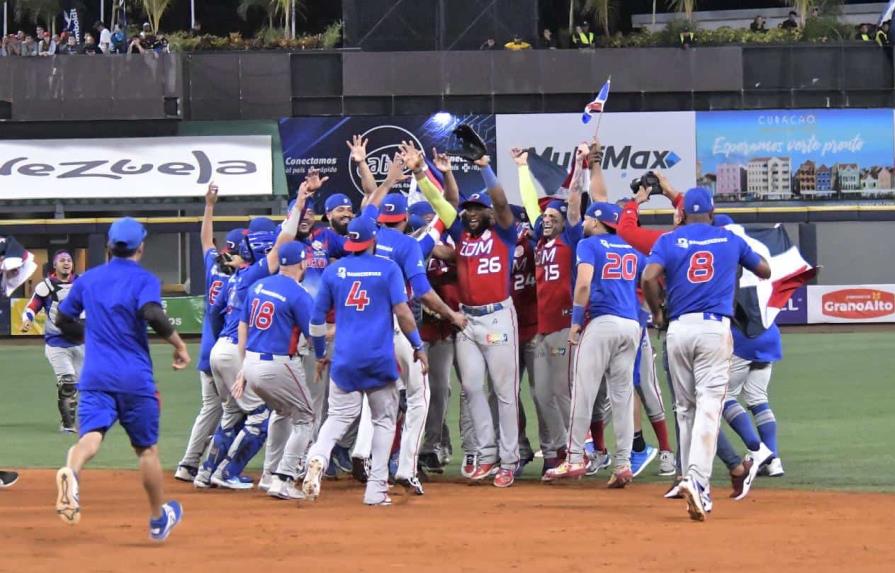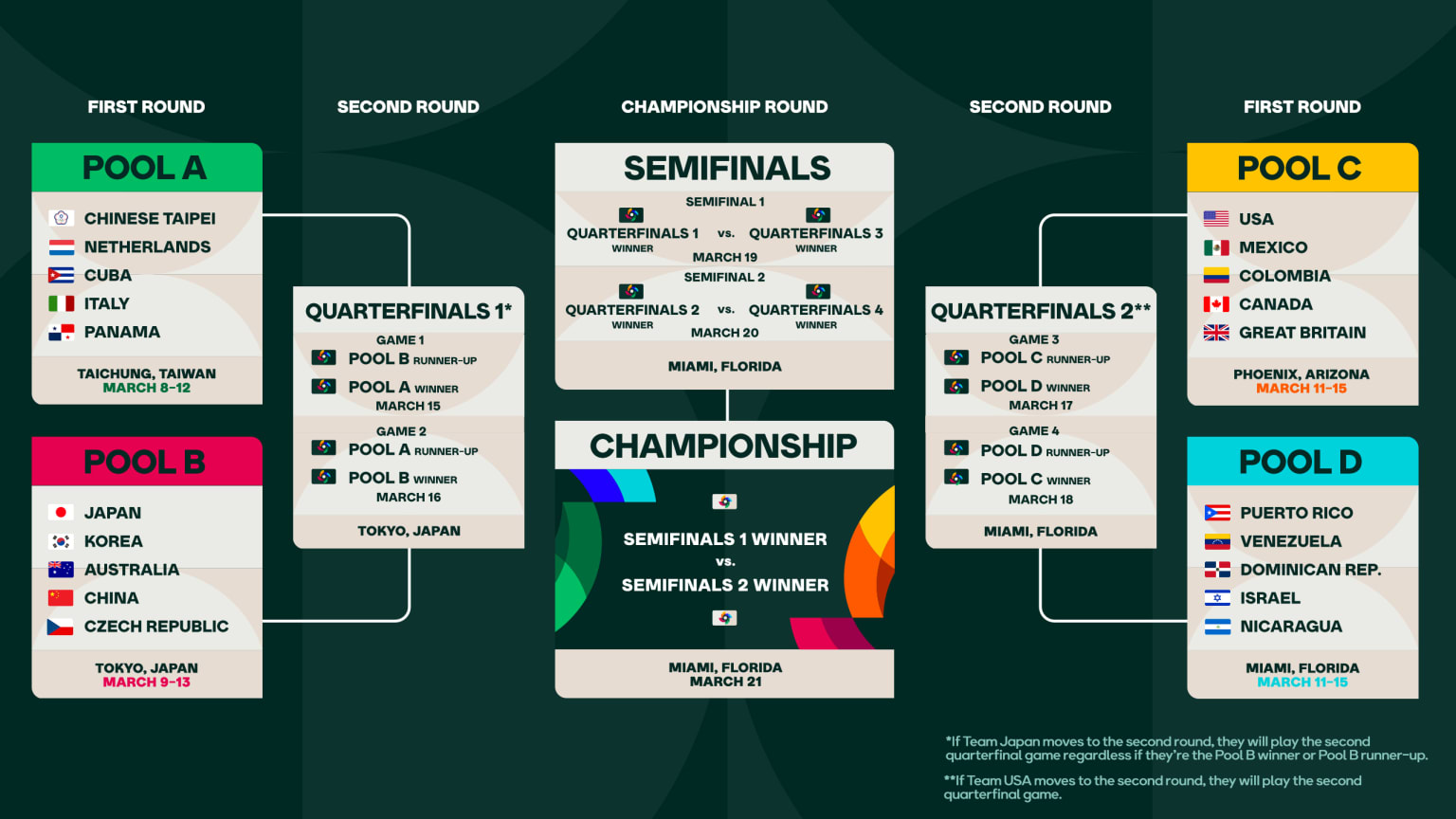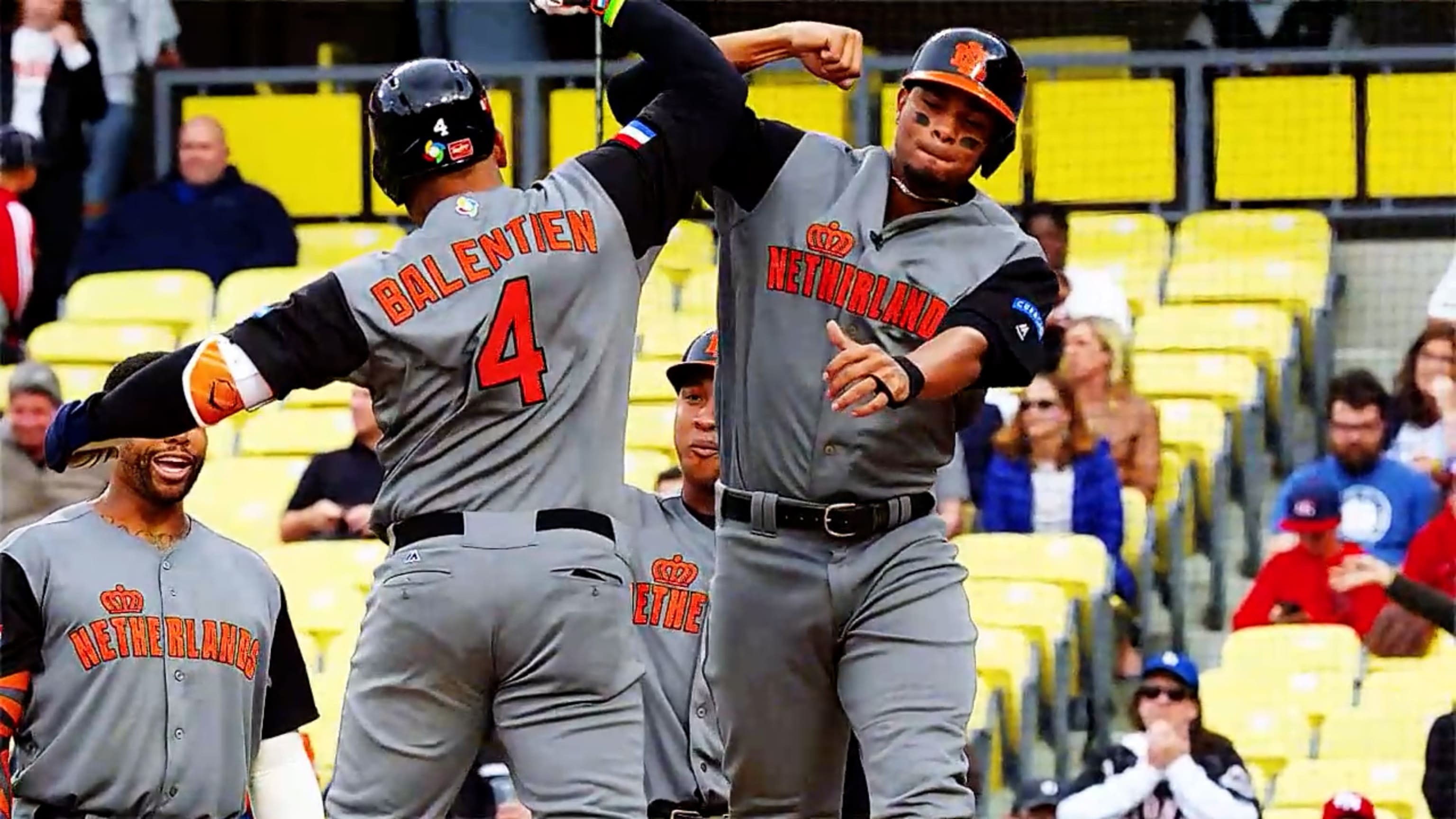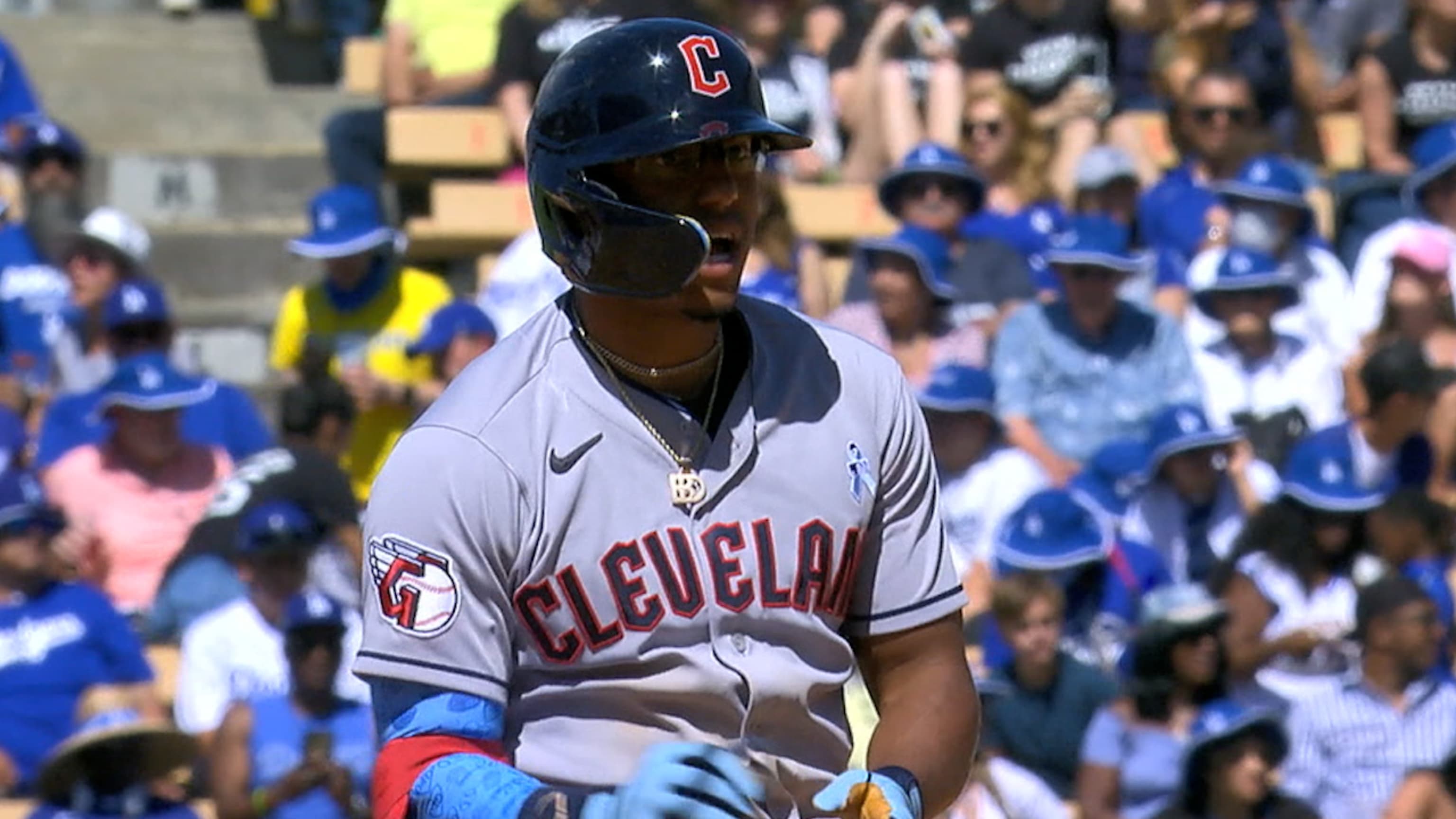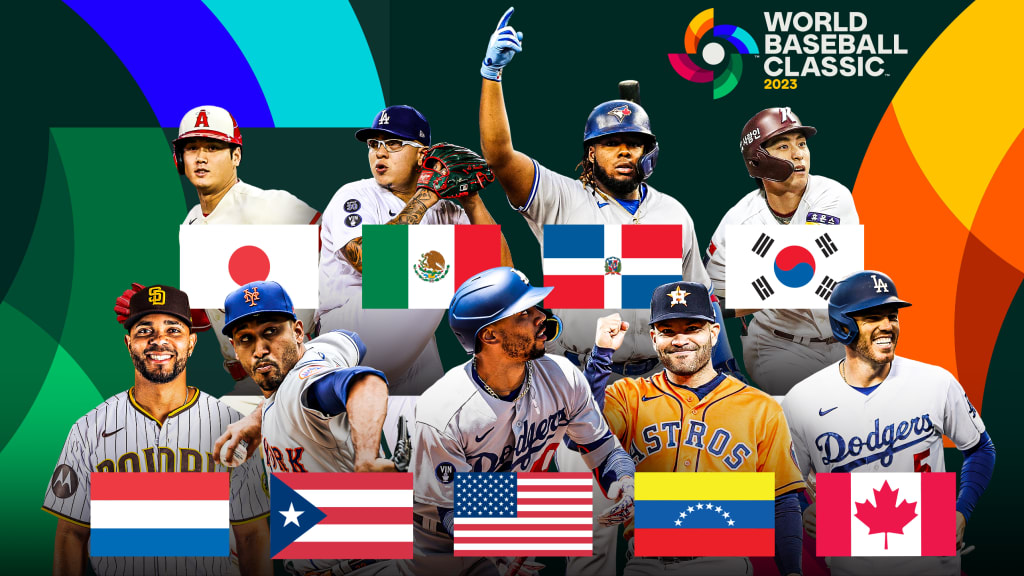10 reasons why this World Baseball Classic will be an instant thriller
By Jon Paul Morosi
February 9, 2023
Each playing of the World Baseball Classic is a heart-pounding, flag-waving, horn-blaring revival. The melodies are different, the artists arrive and depart the stage, but the passion rhymes.
We haven’t heard a sound like this since Jim Leyland and Team USA stood atop the dais at Dodger Stadium six years ago.
Now the wait is nearly over.
The 2023 World Baseball Classic features 20 teams, up from 16. MVPs Shohei Ohtani, Mike Trout, Mookie Betts and Clayton Kershaw are poised to make their Classic debuts. The first pitch is less than one month away.
For international baseball devotees and first-time Classic fans, here are key storylines to watch in the fifth installment of baseball’s best-on-best extravaganza.
1. Team USA has a difficult road to defending the title
Team USA is the reigning champion and has a more star-studded roster this time — all of which guarantees nothing in one of the world’s most unpredictable sporting events.
Consider: In 2006, Team USA had future Hall of Famers Derek Jeter, Ken Griffey Jr., and Chipper Jones, along with Roger Clemens and Alex Rodríguez. And that team failed to reach the semifinal after losses to Canada and Mexico.
This year’s U.S. roster features a better blend of power and speed than previous iterations, thanks to Betts, Trout, Trea Turner, Tim Anderson and Cedric Mullins. Manager Mark DeRosa has an abundance of options for a first base/designated hitter rotation that could include reigning NL MVP Paul Goldschmidt, Pete Alonso and Kyle Schwarber.
The U.S. is the only nation that can win the tournament without having to leave its home soil. That is a massive advantage. Yet, there is urgency in developing the cohesion necessary to win. From the first game of pool play through the championship round in Miami, Team USA would need to play seven times in a span of 11 days. And unlike in 2017, all games after group play are single-elimination.
2. Japan is talented — and tournament-tested
World Baseball Classic champions exhibit two crucial characteristics: star-level talent and chemistry that develops quickly or has already developed through past competitions.
In that way, Japan is better prepared than any other country to win the title.
Samurai Japan won the WBSC Premier12 in 2019 and Olympic gold on home soil two years later. Several key players from those rosters are back for the Classic — joined by Ohtani, who missed the ’17 event due to injury.
North American fans — and teams — are eager to witness the worldwide showcase of potential future MLB stars Munetaka Murakami (who hit 56 home runs last year to break Sadaharu Oh’s record for Japanese-born players) and Rōki Sasaki (who threw 17 consecutive perfect innings last season).
3. The Dominican Republic has assembled one of the great infields ever
We challenge you: Search any roster from the World Baseball Classic -- from the World Series, even the All-Star Game, for that matter -- and it will be difficult to find infield talent comparable to the group Dominican Republic manager Rodney Linares has in the ’23 Classic.
The names? Manny Machado. Jeremy Peña. Vladimir Guerrero Jr. Rafael Devers. Wander Franco. Willy Adames.
Wow.
Oh, and the reigning National League Cy Young Award winner — Sandy Alcantara — is the ace.
4. Cuba’s roster features MLB talent
For the first time, the Cuban federation invited back select MLB players to the national team for a World Baseball Classic. In the end, two players on current Major League rosters — Yoán Moncada and Luis Robert of the White Sox — made the final selection.
Technically, all Cuban-born players are eligible for the tournament, regardless of whether they possess a current Cuban passport. (Under Classic rules, being born in a country is sufficient to comply with eligibility criteria.) The Cuban federation considered candidates on a case-by-case basis, weighing factors that included the circumstances of how each player left the country and his current relationship with Cuba and the national federation.
The motivation for inviting Moncada and Robert is clear: Cuba’s ability to compete internationally has been compromised by the absence of the 33 Cuban-born players who appeared in the Majors last year. Cuba lost to Japan in the championship game of the inaugural Classic in 2006 — and hasn’t reached a semifinal since.
5. Mexico’s moment has arrived
Mexico is well-positioned to advance beyond the first round for the first time since 2009 — and could make the country’s first appearance in a Classic semifinal.
Why the optimism for a team that managed only one victory in each of the last two Classics? Most importantly, Mexico has a deep pitching staff led by starters Julio Urías, Taijuan Walker and José Urquidy, with Giovanny Gallegos headlining the bullpen. The lineup is deeper than six years ago, as well, thanks to Rowdy Tellez, Alejandro Kirk and Randy Arozarena.
The Mexico-USA matchup in Phoenix on March 12 promises to be one of the most electrifying games of the tournament. Mexico is 2-1 against Team USA in Classic play, including the emphatic 2013 victory at Chase Field; Rodrigo López, who pitched for Mexico that year and is now the team’s general manager, estimated that 70 percent of the crowd in Phoenix was cheering for Mexico.
6. Venezuela poised to make a run
Venezuela finished third at the ’09 Classic, when perennial All-Stars Miguel Cabrera, Félix Hernández, and Francisco Rodriguez were in their primes. The Vinotinto faded over the past decade, with a 3-7 combined record over the past two Classics; the ’17 tournament included losses to Puerto Rico by scores of 11-0 and 13-2.
Spain and Italy are the only teams Venezuela has defeated in the Classic since 2009. That won’t be true for much longer.
Luis Arraez (reigning AL batting champ), Jose Altuve (three batting titles) and Andrés Giménez (2022 All-Star) lead the sort of contact-oriented lineup that thrives in tournament baseball, and superstar Ronald Acuña Jr. was a late addition to the roster. Pablo López, Ranger Suárez, Martín Pérez, Germán Márquez, Eduardo Rodríguez and Jesús Luzardo give Venezuela as much pitching depth as it has ever had in a Classic.
7. Big names in the dugout
Mike Piazza is a Hall of Fame catcher. Yadier Molina will likely join him in Cooperstown one day. Four-time All-Star Ian Kinsler won the 2017 World Baseball Classic and a World Series ring the following year. Mark DeRosa helped Team USA reach the ’09 semifinal during a 16-year MLB career that saw him contribute to 12 postseason teams.
All four are managing in the tournament: Piazza (Italy), Molina (Puerto Rico), Kinsler (Israel) and DeRosa (USA).
Canada’s Ernie Whitt deserves special mention as the only person to manage in all five editions of the Classic. Potential MLB managers Jolbert Cabrera (Colombia), Rodney Linares (Dominican Republic) and Omar López (Venezuela) are managing in the Classic for the first time.
8. Korea’s chance at redemption
The Republic of Korea has one of the strongest baseball traditions in the world. They won Olympic gold in 2008, earned silver in the Classic one year later, and stand fourth in the WBSC men’s baseball world rankings.
But Korea’s disappointment at the most recent Classic has lingered for six years. They were one of the host nations in 2017 but lost their tournament opener to Israel and failed to reach the second round.
With a revitalized roster, Korea has a good chance to advance out of Pool B. Outfielder Jung-hoo Lee, son of the Korean baseball icon Jong-beom Lee, can make a lasting impression on MLB teams before he’s posted by KBO’s Kiwoom Heroes after the upcoming season. Korean-American infielder Tommy Edman will represent the country of his mother’s heritage, as he’s reunited with former Cardinals teammate Kwang Hyun Kim.
9. Colombian shortstops, past and present
The breakthrough for Colombian baseball arrived in 2004, when the country claimed both starting shortstops in the World Series: Boston’s Orlando Cabrera and St. Louis’ Edgar Renteria.
That season, three Colombian-born players appeared in the Majors. Last year, the number reached 13 — with more talent on the way. After Colombia nearly upset the United States and Dominican Republic in the ’17 Classic, opponents know better than to underestimate them.
Jolbert Cabrera — Orlando’s brother and the third Colombian player in the Majors back in ’04 — is managing this year’s Classic team. Fittingly, Renteria and Orlando Cabrera are on the coaching staff to mentor the next generation of Colombian infielders: Dayan Frias, 20, of the Guardians and Fabian Pertuz, 22, of the Cubs.
10. Great Britain’s big baseball year
This could be the biggest year for baseball in Great Britain since 1749 — when the sport was invented near London, according to author and researcher David Block. (It’s true: Baseball is a British sport. You can look it up.)
Great Britain will make its Classic debut after winning a qualifying tournament last September in which Mariners catching prospect Harry Ford played a starring role. Ford, an Atlanta native whose parents were born in the United Kingdom, ranks among the MLB Pipeline Top 100 prospects in the sport; he batted .455 with three home runs in the qualifier.
Ford, 19, is on the roster again this spring, along with Dodgers outfielder Trayce Thompson. Great Britain is managed by California native Drew Spencer, a Dartmouth College graduate whose first Classic game will be against Team USA on March 11.
The Classic should generate even more excitement for baseball in the United Kingdom, ahead of the second MLB London Series in June between the Cardinals and Cubs.
Great Britain is arriving to its first WBC with the tournament at its competitive zenith. The margin for error is almost nonexistent – as it is for all 20 teams.
Play Ball.
<





